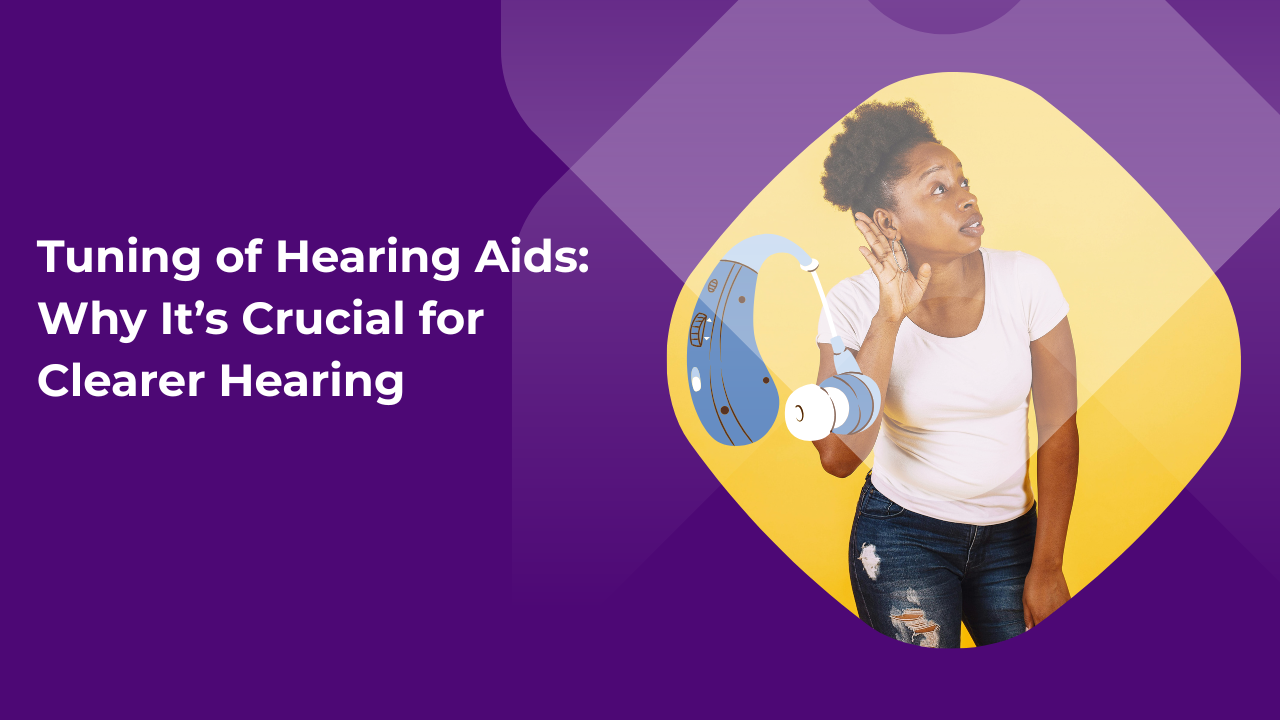Roughly 466 million people around the world live with disabling hearing loss, and while hearing aids offer powerful support, their success heavily depends on one critical detail: tuning. Buying a hearing aid is only the beginning. Without personalized adjustments, even the most advanced devices can sound unnatural or ineffective in everyday life.
What Is Hearing Aid Tuning?
Hearing aid tuning also known as programming is the process of customizing your hearing aid settings based on your unique hearing loss. This is done by an audiologist who uses specialized software to adjust frequency, volume, and noise management.
For example, if someone struggles to hear high-pitched sounds like birds or doorbells, tuning ensures these frequencies are amplified. Imagine trying to watch a movie with the volume set perfectly for someone else—it just doesn’t work. That’s what untuned hearing aids can feel like.
Why Is Tuning So Important?
No two hearing loss profiles are identical. One person may have trouble hearing low tones, while another struggles with speech clarity in noisy places. That’s why tuning is essential. Without it:
- Everyday sounds might feel too loud or harsh
- Speech could remain muffled or unclear
- You may experience unpleasant whistling (feedback)
- The hearing aid may drain your mental energy trying to interpret inconsistent audio signals
Proper tuning helps:
- Sharpen speech, especially in background noise
- Improve sound comfort and reduce fatigue
- Balance left and right ear performance (if using two devices)
- Deliver a soundscape that feels more “normal”
The Tuning Process: Step-by-Step
1. Initial Hearing Evaluation
The journey begins with a full audiogram—a detailed hearing test that identifies which frequencies you can or cannot hear.
2. First-Fit Programming
Using the audiogram, your audiologist sets a base program in the hearing aid using the manufacturer’s fitting software.
3. Real Ear Measurement (REM)
REM is an advanced calibration technique where a small microphone is placed in your ear to test how sound travels through your unique ear canal. This ensures the programmed output matches your hearing needs in real-time.
4. Personal Feedback and Adjustments
Once you start wearing your device, your experience becomes a key tuning factor. If music sounds dull or speech is too sharp, adjustments are made based on your feedback.
5. Ongoing Follow-Ups
Tuning isn’t a one-time fix. Your hearing may change, or your daily environment might shift. Regular sessions—every 6–12 months—keep your device performing optimally.
How Crystal Hearing Solutions Helps
At Crystal Hearing Solutions, tuning isn’t a one-time task—it’s an ongoing process focused entirely on your comfort and clarity. Our audiologists rely on in-depth assessments, advanced REM tools, and your real-world feedback to optimize every setting. We fine-tune your device to support you at work, during conversations, while watching TV, or even in noisy traffic.
We also use Real Ear Measurement to fine-tune devices for the most accurate, personalized results. Whether it’s your first fitting or a retuning session, we ensure your hearing aids adapt to your lifestyle. Schedule a tuning session with our team to feel the difference a correctly programmed hearing aid can make.
Key Takeaways
→ Hearing aids require tuning for optimal performance—not just fitting out of the box.
→ Tuning aligns sound levels and frequencies with your exact hearing loss.
→ Real Ear Measurement (REM) ensures sound behaves naturally in your ear canal.
→ Your feedback shapes final adjustments, making it a collaborative process.
→ Ongoing tuning is necessary as your hearing or lifestyle changes.
→ Crystal Hearing Solutions offers advanced tuning services for better clarity.
FAQ
1. Can I tune my hearing aid myself?
Some models offer app-based controls for minor tweaks like volume or mode changes. However, precise tuning—especially frequency-specific adjustments—requires clinical tools and professional expertise.
2. How long does a tuning session take?
An initial tuning may take 45–60 minutes. Follow-up sessions can be quicker depending on the complexity of changes needed and user feedback.
3. Do all audiologists perform Real Ear Measurements (REM)?
Not all do, but they should. REM is considered the gold standard in hearing aid fitting. Ask your clinic if they offer REM during tuning.
4. How do I know my hearing aid is properly tuned?
You should notice clear speech, reduced effort in noisy settings, and no discomfort or whistling. If anything feels off, return for adjustments.
5. What if my environment changes often—like moving from quiet home to noisy office?
Modern hearing aids allow multiple programs or automatic scene detection. Your audiologist can tune settings that adapt to different sound environments.
6. Is tuning covered in my hearing aid service plan?
Most providers—including Crystal Hearing Solutions—include initial tuning and follow-up sessions in their aftercare plans. Always confirm what’s covered at the time of purchase.
Conclusion
Tuning is not just a technical step it’s what transforms your hearing aid from a generic device into a personal solution. When done right, it helps you hear clearly, comfortably, and confidently across every part of your day. Whether you’re adjusting to a first-time fit or seeking better sound in daily life, the tuning process ensures your hearing aids work for you, not just with you. If your current device feels “off,” it might just need the right adjustment.





